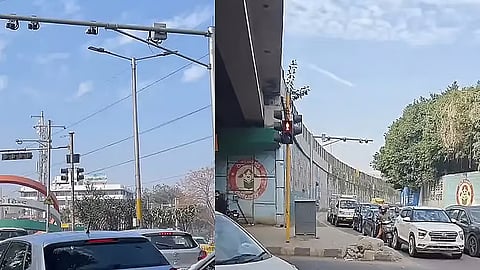

Jalandhar administration in the past 14 days have issued over 4000 E-Challans in the city against traffic violators. ADCP (Operations and Security) Vineet Kumar talking to True Scoop informed that in earlier it was approximately 200 E-Challans that were issued on daily basis. In the last 14 days, approximately 300 E-Challans are being issued on daily basis.
ADCP Vineet Kumar also outlined how traffic violators generally get E-Challans. Furthermore, he outlined how people can differentiate between fake and real eChallans. Continue reading below to know the details-
ADCP (Operations and Security) Vineet Kumar talking to True Scoop informed that a traffic violator gets E-Challan directly on their registered mobile number via Text message i.e. SMS.
"Traffic violators automatically get a message from parivahan.gov.in. It is official government's website. The message also contains a link. When you visit the link you will get all the information about the details of E-Challan like when the challan was cut, on what offences, at which chowk etc."
"Then, there itself you can make the payment of the E-Challan. When an E-Challan gets cut, traffic violators get text message on the registered mobile number based on the RC of the vehicle. In that you get government's website's link- parivahan.gov.in. There you can make the payment as well."
Outlining how you can identify real eChallans, ADCP Vineet said, "It's not like you get a barcode to make the payment of the challans. Authentic website is parivahan.gov.in, you should only trust it as reports of scamsters issuing fake E-Challans have also come. MParivahan App can also be used but its better you directly use the link you have got in text message."
For the unversed, in October 2025, several city residents had reported receiving WhatsApp messages from unknown numbers claiming to be from the Regional Transport Office (RTO), often accompanied by an attached file named “RTO Challan(122)-1.apk.”
Once opened, the file directed users to a fake website designed to mimic the official government e-challan portal. The fraudulent site displayed the Ashoka emblem and claimed to be part of the “eChallan – Digital Traffic/Transport Enforcement Solution,” an initiative of the Ministry of Road Transport and Highways (MoRTH).
Instead of showing legitimate challan details, the fake pages prompted users to provide sensitive personal information such as Aadhaar number, PAN number, full name, mother’s name, phone number, and date of birth.